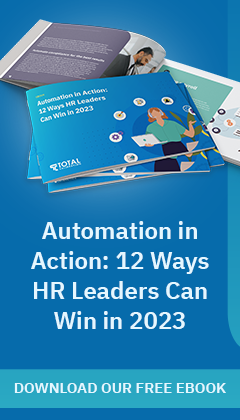We live in a time when there are many different human resource (HR) applications made to perform HR functions — including applicant tracking for hiring, core policy generation, payroll management, and employee performance appraisal — more efficiently. However, we haven’t come to a point in application development where humans are expendable in the HR value chain.
Automation may be immensely useful for taking care of repetitive manual tasks, such as sorting a list of potential candidates in alphabetical order or collating candidate information into profiles. HR professionals, however, cannot leave automation to make nuanced or high-level decisions, such as who among potential candidates will be the right fit for an organisation.
The myth that automation can completely replace manned HR functions is one that business owners should dispel. Here are other HR automation myths you should stop believing right now.
Automation will result in job losses
For the past five years and amidst the hype of AI, driverless cars, and robotic process automation, the question of many has been “Will my job become obsolete? Will my role become irrelevant?” The simple answer is, for the most part, no. According to the McKinsey Global Institute, almost every occupation has the potential for automation at the level of individual activities.
In fact, automation will replace entire occupations only in rare cases. McKinsey Global adds that less than 5% of occupations are candidates for full automation, meaning that the majority of jobs will not be absorbed by automation. The future of automation lies in collaboration, man, and automation working together. HR is no exception. Supervision or management and strategic thinking will not be left to computers but still remain in the hands of HR professionals.
Business process automation is impossible to implement
When some boardrooms think of processes that are impossible to automate, they think of those that involve brainstorming or require engagement between IT teams and external consultants. But in truth, many HR processes that are firmly in place and have become repetitive can be automated.
Fortunately, cost isn't a huge barrier to automation, even for small- and medium-sized businesses. Business process automation provided by managed services providers (MSPs) or cloud-based enterprise solutions usually involves an initial setup cost followed by annual or monthly charges at a pay-as-you-use or scalable basis. Many of them offer HR automation and HR management systems, which have automated processes to manage employee databases, store HR documents, automate onboarding, conduct performance evaluation, and monitor employee training.
What HR automation can do for your organisation
As an HR professional, you know that there are always candidates to recruit, contracts to draw, employees to review, workshops to conduct, and an endless list of other HR tasks.
Work never seems to end, which is why automation is a huge boon to making an HR professional’s work easier and more efficient, allowing them to shift focus away from mundane repetitive tasks and towards more essential areas, such as employee engagement, employee productivity, company culture, and talent development.
Here's a quick list of some practical examples of HR automation:
- Holiday requests are a pain to have to go through manually. Automated HR applications simplify the process by providing employees with a request form that automatically shows available leaves and verifying all the details after a manager approves a leave request.
- Hiring is among the most demanding and most important of HR processes. HR automation streamlines procedures, including hiring requests and approvals, starting the selection process, vetting internal candidates and opening external vacancies, selecting resumes, conducting applicant interviews, beginning the onboarding process, and more.
- Termination is a highly critical process. Errors can lead to significant financial losses, such as fines and even labour lawsuits. Automation standardises all communication and procedures into an employee termination process flow that follows established policies.
- Onboarding workflow can be planned in advance so that hirees receive the same experience and can perform duties to the fullest from the first day of work. At every step of employee integration, notifications and data are automatically shared so that each new employee is well-informed without the need for HR staff to attend to every step.
- Employee information such as contact numbers and addresses can be updated without having to do time-consuming manual work. Employees can instead fill out automated digital forms to update their information. All that HR staff need to do is providequick approval and these forms can then be automatically integrated into a cloud-based employee information system.
At Total Calibration, we offer HR automation and an HR management system, Lanteria HRIS, to vastly simplify the work of your HR team and automate tasks like employee record management, candidate filtering, employee onboarding, tax forms, and employee benefits enrolment. Get rid of time-consuming manual tasks and start focusing more on objectives and strategies that boost employee morale and reduce costs. Contact us today.


